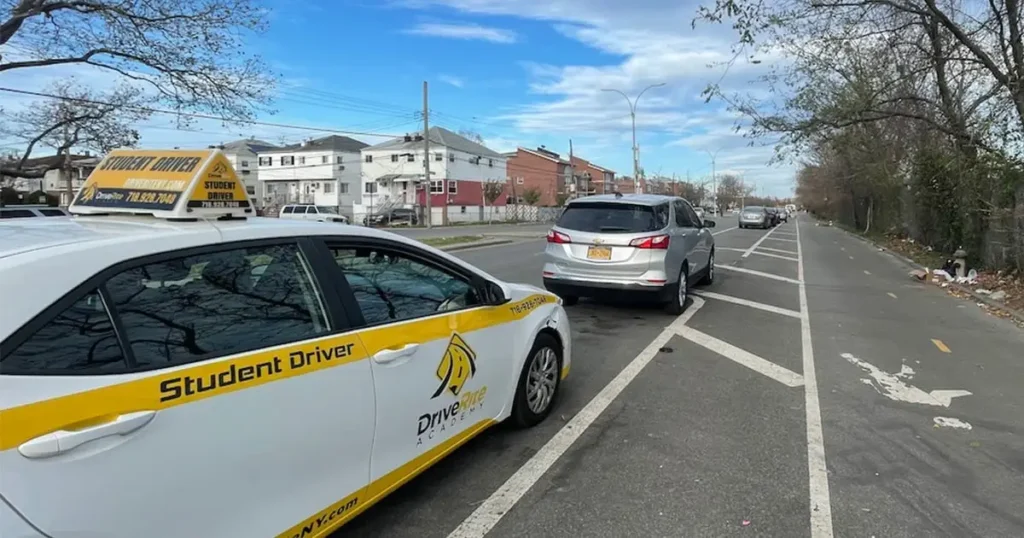Many drivers find parallel parking a difficult task, but it is essential for urban driving in areas where parking space is limited.
The ability to parallel park can be greatly enhanced by understanding the process step-by-step and gaining confidence.
We will explore the intricacies and complexities of parallel parking. The procedure is broken down into simple steps to make it easier for you.
Parking Space Assessment
It’s important to measure the space available before attempting parallel park. Select a space that’s at least 1.5 times as long as your car. Check for parking restrictions and make sure there aren’t any obstructions like fire hydrants. Ample space, as well as a thorough understanding of the local laws and regulations are essential for successful parallel parking.
How to Position Your Vehicle
Arrive at the space and park your car parallel to the vehicle parked directly in front. Allow about 2 feet between the vehicle you are parking and the car in front of it. This will allow for enough space to park comfortably. You can alert other drivers of your parallel parking intentions by indicating your intentions.
Check your blind spots and mirrors for traffic coming from behind before you begin parallel parking. To avoid collisions and disruptions, it’s important to keep an eye on the surroundings. You can use your turn signals to alert nearby motorists to your parking move.
Angle Creating
Turn your steering wheel sharply to the right as you approach the space. The rear of your car will swing in the parking spot if you perform this maneuver. Make sure that the bumper of your car aligns perfectly with the back of the vehicle in front of where you want to park.
Back into the Parking Space
Slowly reverse your car after shifting into reverse. Monitor your rearview and side mirrors as you back up to stay aware of the surroundings. Maintain a constant pace and ensure that the rear wheels are aligned with the curb. Turn the steering wheel slowly to the left in order to adjust the vehicle’s angle.
Straightening Your Vehicle
After your car is properly positioned in the parallel space, you can straighten your steering wheel. Continue backing until the vehicle is completely within the space. You can use your mirrors for a quick assessment of how close the curb is and to determine the distance from your car and those in front or behind. You should aim for an even distribution of weight within the available space.
Final Adjustments
Make any adjustments necessary after you have successfully parked your car in the parallel space. Make sure your car is equally spaced from cars ahead and behind. This will allow you and others room to safely maneuver. Check the alignment between your tire and the curb. Make any necessary adjustments.

How to Exit the Parking Space
Follow a methodical process when leaving parallel parking to prevent collisions and disruptions. Be sure to check for traffic coming from the opposite direction and indicate your intent to merge with it. Slowly reverse your car, while turning the steering to the right. After you have cleared the parking area, put your vehicle in drive and continue with traffic.
Tips on Parallel Parking for Success
- Practice in a controlled setting: Get familiar with parallel parking on an empty lot or quiet street before trying it out in urban settings.
- Use reference points to measure the distance and alignment: You can use specific points of reference, like the corner of the vehicle in the back, when you are parking.
- It’s not about speed: parallel parking isn’t a race. Take your time and approach the task in a methodical manner. If necessary, take some time to review where you are during the maneuver.
- Using technology to assist in parallel parking is a good idea. Many vehicles today are equipped with features such as parking sensors and rearview cameras.
How to overcome parallel parking anxiety
Parallel parking can cause anxiety in drivers. To overcome this fear, you need to combine knowledge, practice and building confidence. Parallel parking can be tackled successfully with regular practice in various environments.
Conclusion: Parallel parking is a valuable skill
Once mastered, parallel parking can help a driver navigate in urban areas with few parking spaces. Drivers can master parallel parking by breaking the process down into small steps, incorporating observation and making adjustments. Parallel parking is a skill that can be developed with practice.
